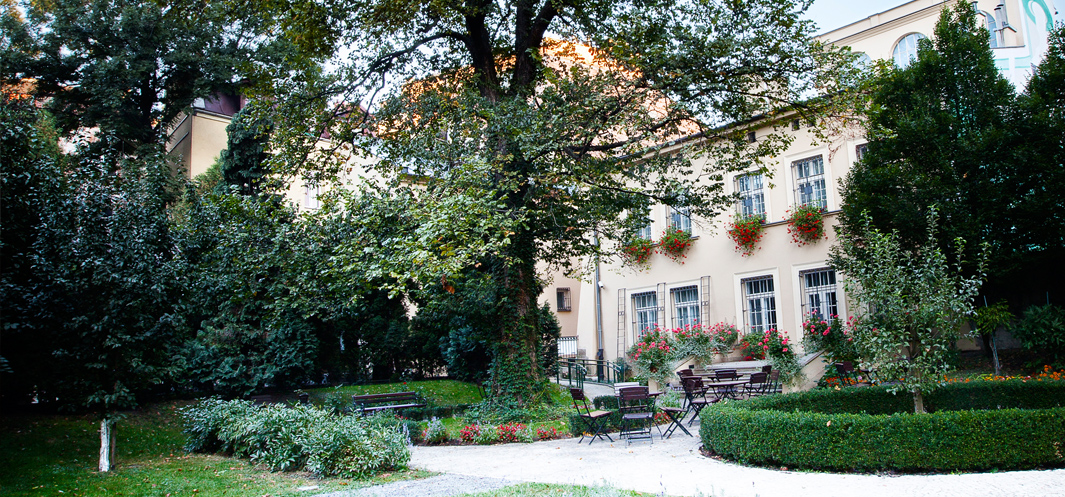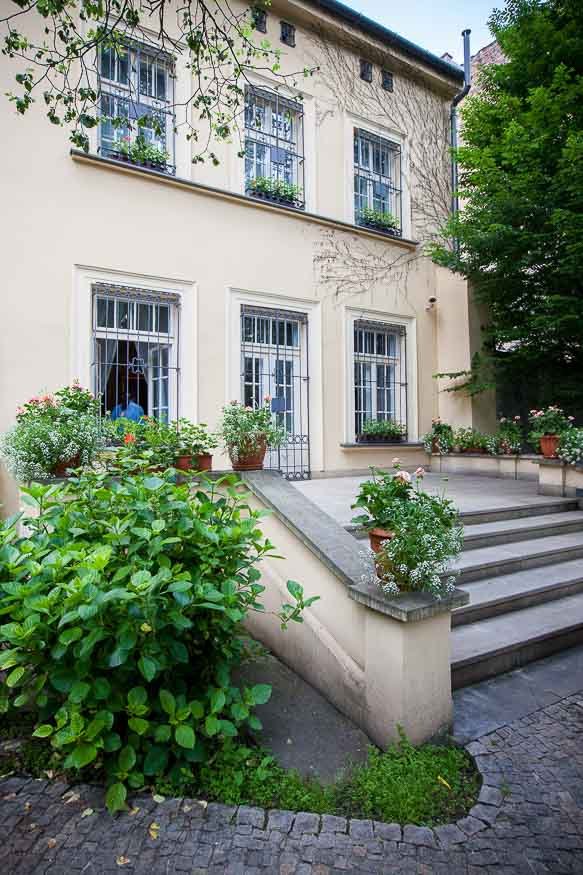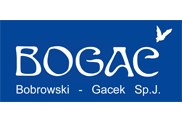On 11 December, the MNK Mehoffer Branch will be open to visitors until 12:00 p.m. We apologize for any inconvenience.
Tuesday is the day of free entry to permanent exhibitions at the MNK.
The museum is closed on Mondays.
Tuesday is the day of free entry to permanent exhibitions at the MNK.
The museum is closed on Mondays.
The Józef Mehoffer House is a Museum branch located in the former residence of the painter at no. 26 Krupnicza Street and is listed in the Register of Historical Monuments. It boasts an adjacent garden extending to the south.
Erected as a one-storey brick building on the site of a former wooden manor that burnt down in a 1850 fire, it owes its present shape to the reconstruction carried out in the years 1873-1874. It is now a two-storey building facing the street, with a pass-through vestibule and a short wing on the right, extended with an annexe and outbuildings expanding inwards along its western border. The view of the building from the garden distinctly shows a large glassed-in area over a grand staircase. The edifice features a classicist 8-axis front elevation. At the request of the painter's son, during the conservative renovation in 1984, the Mehoffer family's coat of arms wrought in sandstone was placed in the gate lintel.
In 1932, the house in Krupnicza Street was purchased by Józef Mehoffer (1869-1946) who was captivated by its old-fashioned look as well as its spacious courtyard and garden shaded by old green trees. The building already constituted part of the city's history.
During the January uprising it gained renown as a place of clandestine activity. At the time, it belonged to a merchant - Mateusz Rogowski (1801-1868), who rented an atelier to a sculptor - Franciszek Wyspiański. The latter later married one of Rogowski's daughters - Maria, and it was here, on 15 January 1869, that the future author of The Wedding was born. Purchased in 1872 by Joanna Szujska, Józef's wife, and later remodelled, the house gained its residential character in line with the high social status of its owners. Józef Szujski (1835-1882), a renowned historian, professor and rector of the Jagiellonian University, member of the National Parliament in Lviv and member of the Austrian House of Lords, was one of the most prominent personages in Galicia. In the years 1894-1932, the house was devastated as its subsequent owners rented it out for craft workshops and other purposes.
Józef Mehoffer carried out its thorough renovation, leaving the structure of the building unchanged but introducing new interior divisions. The process endowed the house with features of a carefully devised family residence, which was dubbed „The Cone Palace”. The outbreak of the war in 1939 interrupted the finishing works. After their return from a German camp in Ash in the Sudetes, the Mehoffers – despite the misery and horror of the occupation - continued the tradition of musical and literary gatherings in their home. It was here that the painter also worked, having lost access to his atelier in the building of the Academy of Fine Arts in Matejko Square.
After Józef's death, the family stayed in the house filled with works of art, archives and memorabilia. As early as in 1963, Zbigniew Mehoffer (1900-1985), the painter's son, began to expend efforts to create Józef Mehoffer's museum in Krupnicza Street, which bore fruit only many years later. In 1986, in accordance with the will of the artist's family, the house and the land became the property of the State Treasury and was transferred to the National Museum in Krakow for the purpose of establishing a branch dedicated to the artist. After further renovations and redecorations, the Museum was opened to the public in 1996.
Text by Anna Zeńczak - art historian, curator emeritus of the National Museum in Krakow specialising in the art of the late 19th and early 20th century, author of studies on the works of Józef Mehoffer.
In 1932, the house in Krupnicza Street was purchased by Józef Mehoffer (1869-1946) who was captivated by its old-fashioned look as well as its spacious courtyard and garden shaded by old green trees. The building already constituted part of the city's history.
During the January uprising it gained renown as a place of clandestine activity. At the time, it belonged to a merchant - Mateusz Rogowski (1801-1868), who rented an atelier to a sculptor - Franciszek Wyspiański. The latter later married one of Rogowski's daughters - Maria, and it was here, on 15 January 1869, that the future author of The Wedding was born. Purchased in 1872 by Joanna Szujska, Józef's wife, and later remodelled, the house gained its residential character in line with the high social status of its owners. Józef Szujski (1835-1882), a renowned historian, professor and rector of the Jagiellonian University, member of the National Parliament in Lviv and member of the Austrian House of Lords, was one of the most prominent personages in Galicia. In the years 1894-1932, the house was devastated as its subsequent owners rented it out for craft workshops and other purposes.
Józef Mehoffer carried out its thorough renovation, leaving the structure of the building unchanged but introducing new interior divisions. The process endowed the house with features of a carefully devised family residence, which was dubbed „The Cone Palace”. The outbreak of the war in 1939 interrupted the finishing works. After their return from a German camp in Ash in the Sudetes, the Mehoffers – despite the misery and horror of the occupation - continued the tradition of musical and literary gatherings in their home. It was here that the painter also worked, having lost access to his atelier in the building of the Academy of Fine Arts in Matejko Square.
After Józef's death, the family stayed in the house filled with works of art, archives and memorabilia. As early as in 1963, Zbigniew Mehoffer (1900-1985), the painter's son, began to expend efforts to create Józef Mehoffer's museum in Krupnicza Street, which bore fruit only many years later. In 1986, in accordance with the will of the artist's family, the house and the land became the property of the State Treasury and was transferred to the National Museum in Krakow for the purpose of establishing a branch dedicated to the artist. After further renovations and redecorations, the Museum was opened to the public in 1996.
Text by Anna Zeńczak - art historian, curator emeritus of the National Museum in Krakow specialising in the art of the late 19th and early 20th century, author of studies on the works of Józef Mehoffer.




